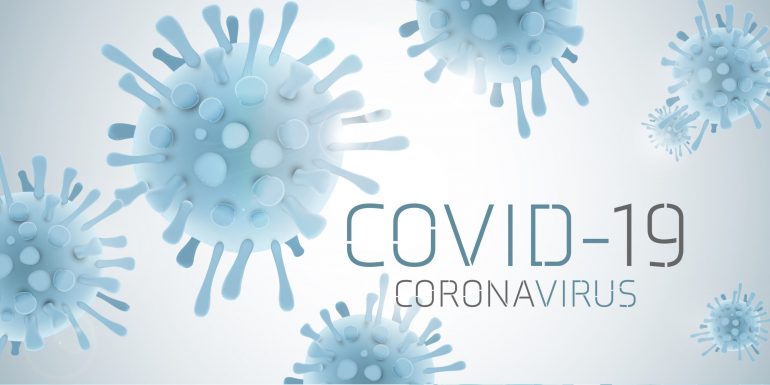How long do antibodies stay in the body after COVID-19?
Even nine months after SARS-CoV-2 infection, so-called antibody levels seem to be high. Furthermore, there are no significant differences between antibody levels in symptomatic and asymptomatic infections, which suggests that the strength of the immune response does not depend on symptoms and severity of infection.
For a new study, researchers from the University of Padua and Imperial College London screened almost the entire Italian city (85 percent) for SARS-CoV-2 infection in February/March 2020. The participants were then tested again for antibodies against the virus in May and November 2020.
COVID-19. Antibody levels are still high nine months after
It was shown that antibody levels are still high nine months after SARS-CoV-2 infection, regardless of whether they are symptomatic or asymptomatic. The results of the study can be found in the English-language journal “nature communication“Can be read.
The team found that 98.8 percent of those infected in February/March still had detectable levels of antibodies in November, and there was no difference between those who were suffering from symptoms of COVID-19 and those who were symptom-free .
Different results on different tests
Antibody levels were monitored using three so-called assays, i.e. tests that detect different types of antibodies that react to different parts of the virus. According to the researchers, the results showed that although all antibody types showed a definite decrease between May and November, the rate of reduction varied depending on the assay.
Cases have also been identified where antibody levels increased in some people, suggesting possible re-infection with the virus and boosting of the immune system, experts said.
What does the strength of the immune response depend on?
“We found no evidence that antibody levels differ significantly between symptomatic and asymptomatic infections, which suggests that the strength of the immune response does not depend on symptoms and severity of infection,” said study author Dr. Ilaria Dorigatti from Imperial College London.
Use caution in assessing the level of infection
“However, our study shows that antibody levels vary significantly depending on the test used. This means that caution is advised when comparing estimates of infection levels in populations obtained from different tests in different parts of the world and at different times, ”says the expert.
Infection was often ignored
According to study author Professor Enrico Lavezzo from the University of Padua, the results showed that 3.5 percent of the population had been exposed to the virus. Not all of these people were aware of their risk due to the high proportion of asymptomatic infections.
“During the follow-up examination, which was done approximately nine months after the outbreak, we also found that antibodies were less abundant, so we would have to continue monitoring antibody persistence over a longer period of time,” says the expert.
Home infection?
The team also looked at the infection status of other people in the house so that the possibility of infection of an infected member inside the house could be ascertained. The research group’s modeling suggests that the risk of someone infected with SARS-CoV-2 passing the infection to someone else in the household was around one in four.
Most transmissions (79 percent) were caused by the 20 percent infected, according to the team. This confirms that there are large differences in the number of secondary cases generated by infected people, with most of those infected not causing further infection and a minority of those infected causing large numbers of infections.
Safety rules are also necessary after vaccination
The wide variation in the way in which an infected person can infect other people in the population suggests that behavioral factors are important to control the epidemic, including physical distancing, limiting the number of contacts and continuing to wear masks. It is important to reduce the risk. transmit the disease, even in highly vaccinated populations, explain the researchers.
Isolation and curfew was needed
The assessed data sets enabled the team to differentiate between the effects of the various control measures. According to experts involved in the study, the results showed that manual contact tracing alone would not have been enough to disrupt the pandemic if it were not for the isolation of cases and a brief curfew.
“The study also shows that manual contact tracing – the search for positive individuals based on known and explained contacts – would have had a limited effect on containing the epidemic, it did not with mass screening,” said the research’s head of research. Report of the project, Professor Andrea Crisanti from the University of Padua a Press release.(as)
Author and source information
This text complies with the requirements of specialist medical literature, medical guidelines and current studies and has been checked by doctors.
hilarious:
- Laria Dorigetti, Enrico Lavezzo, Andrea Crisanti: SARS-CoV-2 antibody dynamics and transmission from community-wide serological testing in the Italian municipality of Vo’; In: Nature Communications (veröffentlich 19.07.2021), nature communication
- Imperial College London: COVID-19 antibodies persist for at least nine months after infection (veröffentlich 19.07.2021), Imperial College London
Important Articles:
This article is for general guidance only and is not intended to be used for self-diagnosis or self-treatment. He cannot take the place of visiting the doctor.

Web guru. Amateur thinker. Unapologetic problem solver. Zombie expert. Hipster-friendly travel geek. Social mediaholic.





